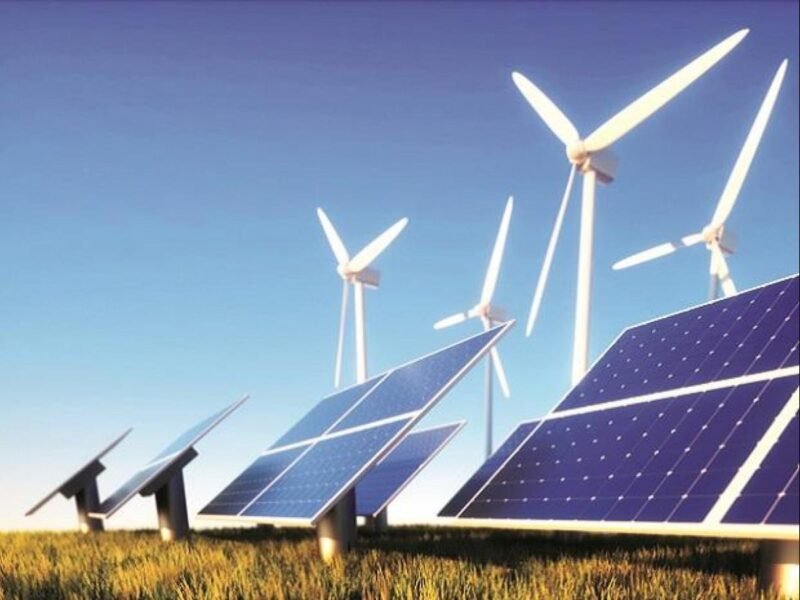
Investments within the renewable energy sector in India are seeing growth again following the slowdown within the previous fiscal year thanks to the onset of the coronavirus disease (Covid-19) pandemic, a recent study by the Institute for Energy Economics and Financial Analysis (IEEFA) found
Between April and July this year, investment within the Indian renewable energy sector reached US$6.6 billion, surpassing the US$6.4 billion level record within the 2020-21 financial year . The findings within the study projected that and therefore the investments have the potential to breach the US$8.4 billion milestones achieved within the 2019-20 fiscal year before the pandemic struck.
“Rebounding energy demand and a surge of commitments from banks and financial institutions to end fuel financing are helping drive investment into Indian renewable energy infrastructure,” Vibhuti Garg, an energy economist at IEEFA, who co-authored the report, said.
The new IEEFA note explores renewable energy investment trends during the 2020-21 fiscal and for the primary four months of the continued fiscal year and descriptions the key deals made during both periods. It highlighted that the bulk of the cash flowed through acquisitions which helped in recycling the capital into new projects.
The largest of around 30 deals during the 2020-21 fiscal and in April to July period in 2021-22 fiscal year was SoftBank’s exit from the Indian renewable energy sector in May 2021 with a US$3.5 billion sale of assets to Adani Green Energy Limited (AGEL). With this acquisition, AGEL became a serious investor also because the world’s largest solar developer.
Other major deals included Engie’s acquisition by Edelweiss Infrastructure Yield Plus for $550 million, Acme’s acquisition by Scatec Solar for $400 million, and Fortum’s acquisition by Actis for $333 million.
Analysis of various sorts of deals revealed the bulk of the opposite big investments were packaged as debt, equity investment, green bonds, and mezzanine funding.
Indian renewable energy developers are attracting huge investments from green bonds, said Saurabh Trivedi, a search analyst at IEEFA.
“In April 2021, ReNew Power raised money from green bonds with a tenor of seven .25 years at a hard and fast rate of interest of 4.5% once a year , and this was soon trumped in August 2021 by the $414 million 2026 green bond by Azure Power Global at a record low 3.575% per annum .”
In the latest development, a mega $8 billion special purpose acquisition company (SPAC) transaction between ReNew Power and RMG Acquisition Corporation II has approval from a majority of shareholders, paving the way for a Nasdaq listing with expected trading from August 24.
“This may be a landmark transaction because it represents the most important overseas listing of an Indian company via the SPAC route,” says Trivedi.
IEEFA’s note also points to many very positive developments: investment in India is clearly shifting towards renewables; the govt is redoubling efforts to spice up energy security and self-reliance by expanding clean energy technologies as demonstrated by Prime Minister Modi’s Independence Day speech, and Indian corporates like Reliance and JSW Energy are making big clean energy commitments.
In addition, the lending portfolios of Indian financial institutions like depository financial institution of India and Power Finance Corporation now include more renewable energy assets than fossil fuels, a trend which has picked up significantly within the last one to 2 years, consistent with the note.
In a report published in February this year, the IEEFA highlighted that India would require an extra $500 billion in investment in new wind and solar infrastructure, energy storage and grid expansion and modernisation to succeed in 450 gigawatts of capacity by 2030.
“The decarbonisation of the energy sector will demand massive amounts of investment, and therefore the flow of capital into this space will got to accelerate rapidly so as to satisfy India’s clean energy targets and enable a green recovery towards a sustainable economy,” says Garg.
India is currently investing around $18-20 billion in energy generation capacity and an extra $20 billion within the grid on an annual basis. to realize the Sustainable Development Scenario (SDS) within the International Energy Agency’s India Energy Outlook 2021 the country would wish to triple its current rate of annual investment to $110bn.
“This is daunting in one respect,” says Garg. “But the financial trends in Indian renewable energy and grid infrastructure over the last two to 3 years strongly suggest domestic and global capital can support this ambition.”
